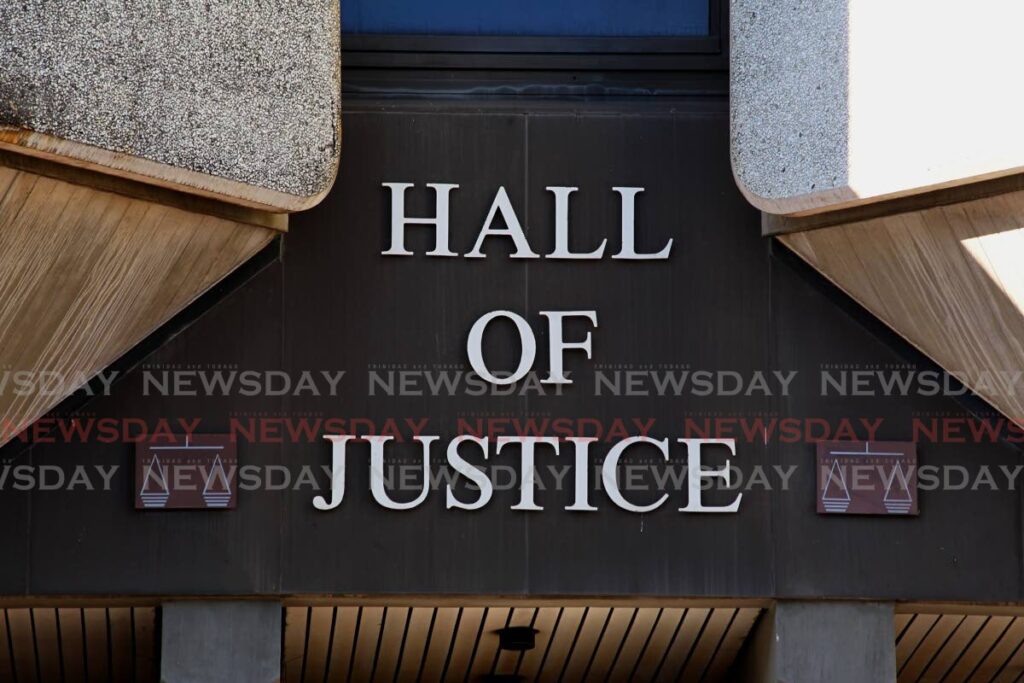Judiciary defends its emergency response when lawyer died in court

It would be impractical to provide on-site medical specialist capacity to all of the Judiciary’s 25 locations, it said in a release on Sunday.
The Judiciary also insisted it was able to deal with medical emergencies at any of its court buildings.
In a statement sent close to midnight on Sunday, the Judiciary took issue with suggestions that there were no emergency medical response procedures in place when attorney Neil Byam collapsed on Friday and later died in the courtroom.
Byam, 61, a retired deputy Solicitor General, was addressing the panel of judges in the Appeal Court, Hall of Justice, Port of Spain when he collapsed and had to be aided by the judges and attorneys present.
A Judiciary employee tried to resuscitate the unconscious Byam by following instructions given by a doctor who was contacted via video conferencing. Emergency responders came 20 minutes later.
Addressing what had happened later that day, Justice Prakash Moosai, one of the three judges on the panel before whom Byam was making submissions, said a review or overhaul of the Judiciary’s emergency response protocols was needed.
“The response system ought to be a bit quicker in my view,” he said.
However, the Judiciary’s release said “nothing could be further from the truth” than to suggest there were no emergency medical response procedures in place.
It mentioned queries by Newsday for confirmation that an incident had taken place at the Court of Appeal, but said “not having had confirmation of his passing” at the time and in consideration to Byam’s family, it “merely confirmed that there had been a medical incident.”
It then advised of the “accurate medical response procedure” at the Judiciary.
According to the release, all judges and staff have the number for its medical response team (MRT), including its security officers assigned throughout the buildings.
It said on Friday, Justice Gillian Lucky, who was also presiding over the appeal with Moosai and Justice Allan Mendonca, called the MRT number and got an immediate response.
The Judiciary's standard operating procedure is for one of its trained and certified first responders to immediately go to the person’s aid.
"In each of our 25 court locations, all of the senior security personnel (our men in black) and other court security officers, as well as several other members of staff, are trained and certified to act on these occasions. On this occasion, a trained court security officer arrived within two minutes and turned the attorney on his side and began compression subsequently.
“As a doctor had been called by someone in the courtroom and was on video, he (the security officer) did not act independently as he would do otherwise but followed instructions of the doctor until the ambulance service which was called by our MRT arrived within 18 minutes.”
The Judiciary said its MRT on-call doctors were not called immediately as its procedures require, since “a doctor was already guiding our first responder.”
“Our first responder was about to begin mouth-to-mouth resuscitation when the ambulance service emergency medical team (EMT) arrived.”
The Judiciary said its own doctor was called when the EMTs were there and they advised that chest compressions should continue.
Its employee assistance programme co-ordinator, who is stationed at another building, arrived within 30 minutes to give support, the release said.
“It is indeed unfortunate that in their shock and grief, people say things without having information and thus cast aspersions on the Judiciary’s medical response team and on its first responders who have handled many incidents in our 25 court buildings which, fortunately, due to their intervention did not end in the death of the person who was impacted.
“The Judiciary realises that emergencies, medical or otherwise, by their very nature, do not call for a ‘cookie cutter’ reaction but must be dealt with in keeping with well-developed SOPs.
“On this occasion, these processes were engaged.”
It said while at each court location, there was certain equipment and medication for first responders, none was appropriate on Friday and, “not being doctors, our first responders are not permitted to take decisions to administer certain medications or undertake certain procedures.”
The release said, “The passing of our esteemed colleague has left us all shaken, distraught and distressed. To point fingers or make uninformed statements at this point certainly does not offer comfort or support to Mr Byam’s family in their moment of grief.
“As it does after every incident, the Judiciary’s emergency team comprising the occupational safety and health (OSH) unit, security unit and MRT will review processes and procedures and make any appropriate adjustments.”


Comments
"Judiciary defends its emergency response when lawyer died in court"